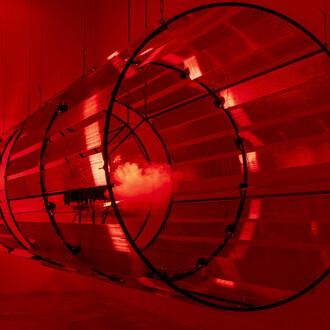Have you ever thought about what the satellites that humans send into space are for? At no less than 786 kilometres above sea level are two twin satellites: Sentinel-2A and Sentinel-2B, brothers who work constantly on observing the Earth and the surface of the seas.
These instruments are essential for knowing the state of the coasts, lagoons, lagoons, beaches or coral reefs, among others, with the aim of offering us useful information that helps us study oceanographic and biological processes. Thanks to their spatial resolution (the size of the pixels in a satellite image), they allow us to portray these ecosystems in detail, through what is known as ocean colour, that is, the electromagnetic radiation of the surface of the seas. In this exhibition you will enjoy the ocean colours that radiate from waters as well known as the Gulf of Cadiz, the Guadalquivir River or the Ebro Delta, among other international locations.
Science and art come together in this exhibition, a display that introduces us to these open-air museums and gives us the opportunity to become aware of the importance of their protection and preservation.
The images in this exhibition are from the results obtained within the framework of the COSSENT project, funded by the Ministry of Science, Innovation and Universities, the State Research Agency and the European Union NextGenerationEU/PRTR. The curator of the exhibition is Isabel Caballero de Frutos, a researcher at the Institute of Marine Sciences of Andalusia (ICMAN), a centre of the Higher Council for Scientific Research (CSIC) located in Cadiz.
















